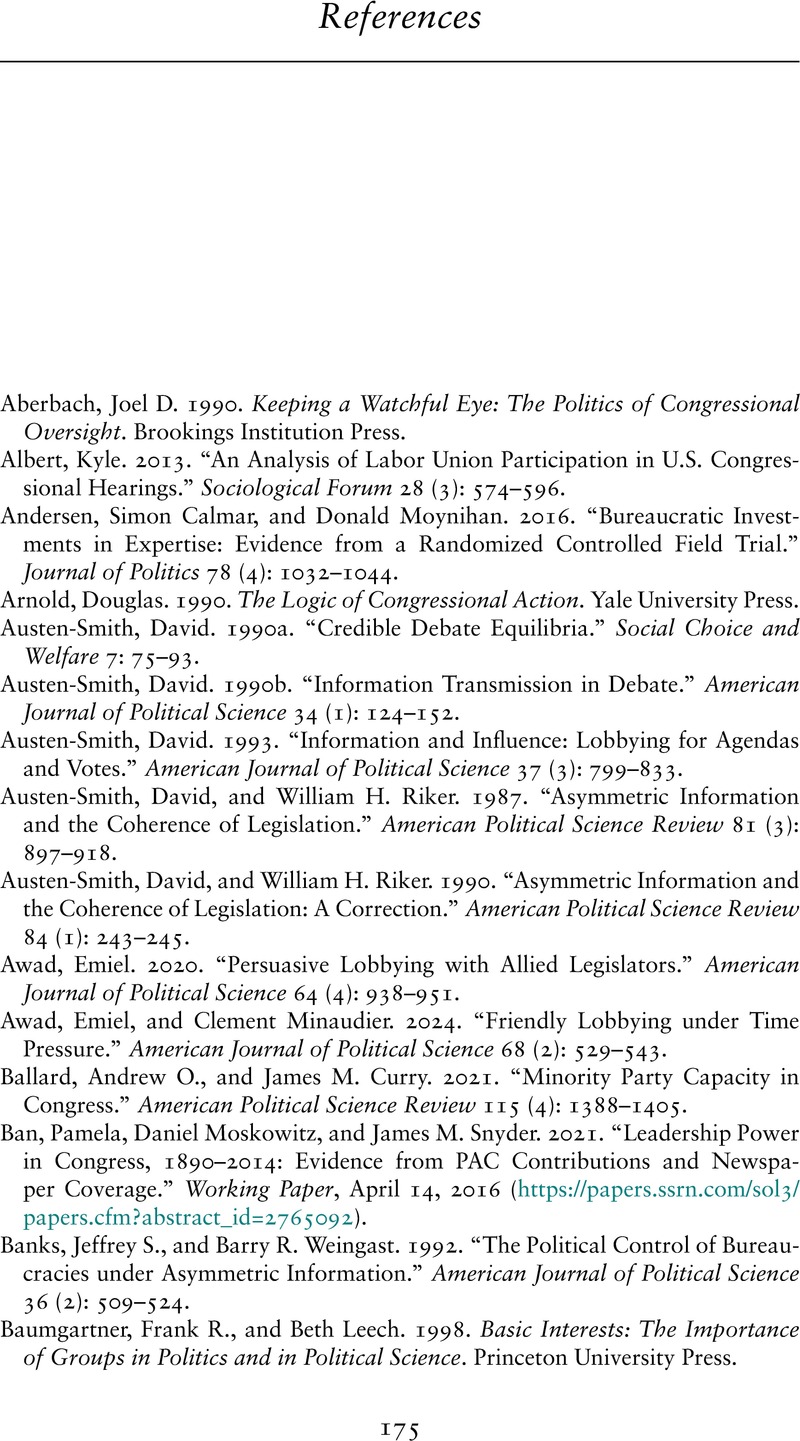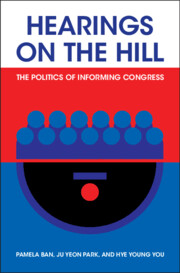Book contents
- Frontmatter
- Dedication
- Contents
- Figures
- Tables
- Acknowledgments
- 1 Members of Congress Are Politicians, Not Experts
- 2 Committee Hearings and Information Provision in Congress
- 3 Who Testifies in Congress? New Data on Congressional Hearings and Witnesses
- 4 Not All Information Is Equal
- 5 When Committees Seek Out Information for Policy Development
- 6 How Control of Government Shapes Information Exchange
- 7 Congressional Capacity and the Search for Specialized Information
- 8 Conclusion
- Appendix A
- References
- Index
- References
References
Published online by Cambridge University Press: 21 November 2024
- Frontmatter
- Dedication
- Contents
- Figures
- Tables
- Acknowledgments
- 1 Members of Congress Are Politicians, Not Experts
- 2 Committee Hearings and Information Provision in Congress
- 3 Who Testifies in Congress? New Data on Congressional Hearings and Witnesses
- 4 Not All Information Is Equal
- 5 When Committees Seek Out Information for Policy Development
- 6 How Control of Government Shapes Information Exchange
- 7 Congressional Capacity and the Search for Specialized Information
- 8 Conclusion
- Appendix A
- References
- Index
- References
Summary

- Type
- Chapter
- Information
- Hearings on the HillThe Politics of Informing Congress, pp. 175 - 186Publisher: Cambridge University PressPrint publication year: 2024

